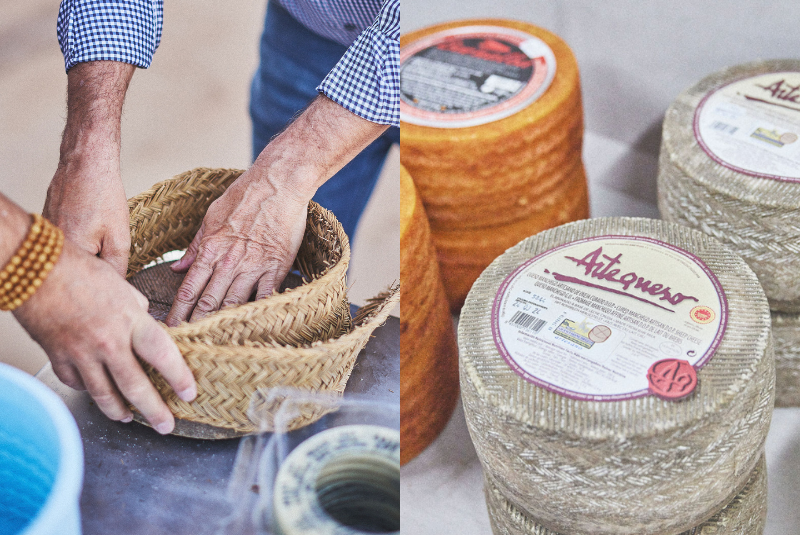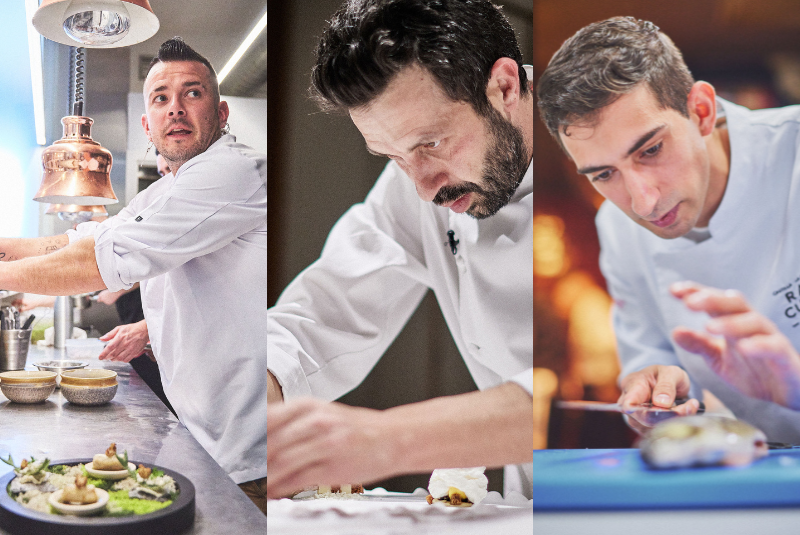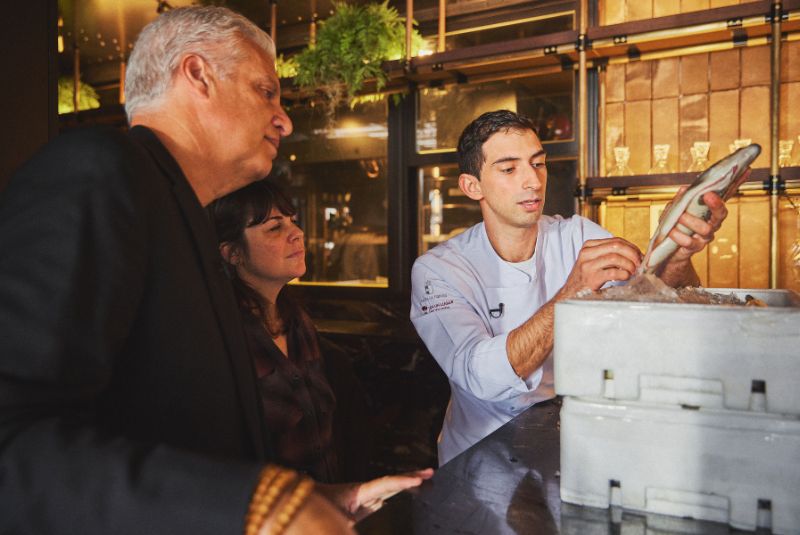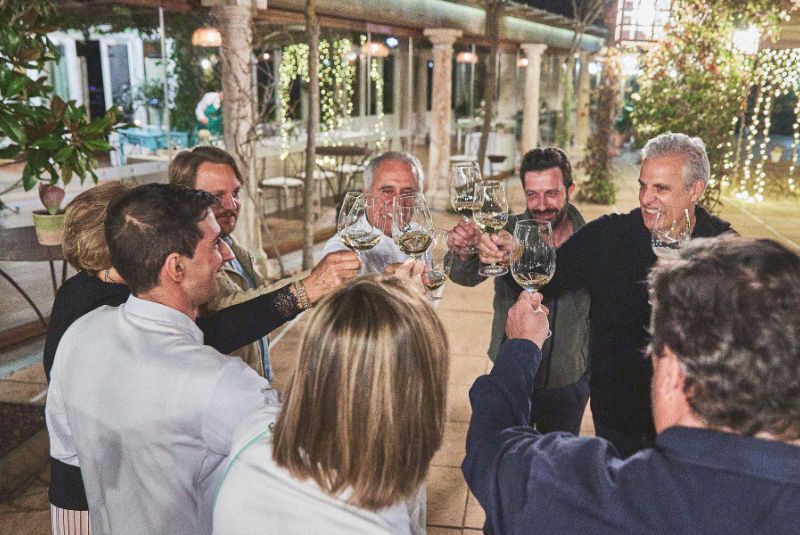The home of Manchego cheese, marzipan and Don Quixote, Castilla-La Mancha has long been an underdog in the Spanish gastronomic hierarchy. Returning after a four-year hiatus, the 50 Best Explores series sees globally acclaimed chef Eric Ripert head to this fertile region to be seduced by its culinary charms
Spain is renowned for its world-class food and drink scene, with the likes of Barcelona, Madrid, San Sebastian and Valencia receiving myriad plaudits. From Catalonian calçots to Valencian paella and bite-sized Basque Country pintxos, distinctive dishes and local traditions have solidified their status as internationally renowned dining destinations.
However, just a stone’s throw south of the country’s capital, there’s one region of Spain that’s been largely excluded from the conversation. For some, Castilla-La Mancha is best known as the setting for Don Quixote’s windmills and swords. In reality, Spain’s third-largest region boasts a rich history and deep culture around the culinary arts, from its world-class produce to its brigades of chefs delivering stellar hospitality. Away from eager onlookers, Castilla-La Mancha has been quietly honing its craft, waiting for its moment to step into the limelight.
Want to see the whole trip? Watch the first episode of 50 Best Explores Castilla-La Mancha here:
“Prior to coming here, I didn’t know anything about the region,” says Eric Ripert, the chef and co-owner of Le Bernardin in New York, which has maintained a spot on The World’s 50 Best Restaurants ranking for almost 20 years. Ripert admits that while he had read Don Quixote, the 17th century landmark novel based in the area, his culinary knowledge of Castilla-La Mancha was limited to the fact that it is famous for growing high-quality saffron. He grew up in Andorra and is frequently in Spain, including Madrid, but has never previously made the journey just an hour south of the capital.
At the onset of the 50 Best Explores Castilla-La Mancha trip, Ripert exudes excitement, particularly as a chef driven by a produce-forward philosophy who enjoys eating Manchego cheese almost every day! After spending a week touring the region’s Toledo province, meetings its chefs and artisan food and drink producers, he jokes that he may never leave.
The windmills of Consuegra are one of Castilla-La Mancha's most well-known attractions, made famous for their mention in Don Quixote
Despite its lack of international notoriety, Castilla-La Mancha boasts a storied relationship with food production. Deriving part of its name from the Arabic “al-Manshah”, taken from its history as a key battleground of religious crusades, its translation equates to “dry land” or “wilderness”.
The mostly flat area has long been fertile ground for agrarian practices, utilised by the many fincas (farmhouses) dotted across the region. Housed in these humble estates are artisans who have maximised the fruitful grounds of Castilla-La Mancha to create exemplary produce, including cheese, olive oil and wine producers with centuries of staying power.
One of the most celebrated production houses in the region is Finca la Prudenciana: home to a trio of businesses working in symbiosis to create the region’s most famous export, Manchego cheese. While each is owned and run independently, they operate in unison – from the flock management to the milk production and final cheesemaking and ageing – to create an end result greater than the sum of its parts.
At the heart of this operation is Artequeso – a quad-generational family affair helmed by Álvarez Sánchez-Prieto alongside his wife and daughter. From the outside, Finca la Prudenciana bears the hallmarks of most local cottage producers of the area, with pristine painted white stone walls adorned with decorative ceramic plaques.
While the traditional method of shaping Manchego DOP using straw bands is no longer used, each wheel made by Artequeso is still stamped to signify it was created by artisans
However, visitors walking through its unassuming barn doors are greeted by swathes of modern machinery, where wooden features have made way for towering stainless-steel tanks and state-of-the-art contraptions. Here the lifespan of each wheel of cheese can be traced, transformed from raw sheep’s milk solidified into its signature ridged mould, aged and marked with the vital classifying stamp that certifies its authenticity.
Today, Artequeso ships across the world, including to the US, where Ripert had previously sampled its wares. Its Manchego DOP, which by law must be made from unpasteurised milk alone, is the best Ripert has ever tasted. More contemporary offerings, such as a sheep-milk cheese cured in red wine or rosemary, are just as nuanced. Its magnum opus, cubes of the Manchego cured and served in olive oil, boasts the umami, creaminess and tyrosine crystalline structure associated with aged Parmesan.
“I’ve never had Manchego like this before,” says Ripert. “I’m going to make some calls to see if I can get it when I’m back home.” In the meantime, he laughs about smuggling a wheel back to Manhattan under his coat. Each of the producer’s offerings is world class, but its greatest strength has stemmed from its ability to revolutionise its processes without losing the human touch. For the Sánchez-Prieto family, this remains their life and the attached drive and passion for the craft is evident.
Finca La Pontezuela's '5 Elementos' oil is its most awarded offering, inspired by the earth, wind, air, fire and wood of its olive groves
Just north of the walled city of Toledo, the region’s capital, this same concept rings true at Finca La Pontezuela, an olive oil distillery accessible only by a small gravel track. Acquired by prior generations of the current owners’ family in 1974, this historic estate spans 400 hectares of land where over 18,000 olive trees decorate its hills in perfectly uniform lines.
However, come harvest season, La Pontezuela steers clear of machinery. Just 20 workers are brought on board to harvest the fruit by hand, maintaining a quality control unachievable by any mechanised alternative. Once fully gathered, the olives pass into its slick processing facility, which sits alongside an ultra-modern museum dedicated to this liquid gold, boasting interactive exhibits enhanced by augmented reality. It’s clearly a winning formula, as Finca La Pontezuela has been awarded over 72 domestic and international accolades for its extra virgin distillate.
This dichotomy of ancient and modern is perhaps an analogy for Castilla-La Mancha in its entirety. It appears to present the characteristics of a locality happily basking in its bygone years; but take a peek behind the curtain and you’ll find modernised production procedures at the very forefront of their fields.
Chefs Carlos Maldonado, Iván Cerdeño and Victor Infantes (L to R) are three of Toledo Province's leading gastronomic stars
A similar potential for wider appreciation rings true within the region’s restaurants too. Chefs within Castilla-La Mancha have long seen themselves as underdogs with the Spanish gastronomic community but they have recently focused on their own various reinventions of Manchegan cuisine.
At Raices, which translates as “roots”, chef Carlos Maldonado plays with colour and technique to present regional delicacies, such as baby eels in delicate broths, on intricate ceramics created by traditional potter Fran Aguado, based just a few kilometres up the road. “I know this one!” Ripert says when visiting the ceramicist’s workshop, pointing out a towering painted piece that he had been presented hors d'oeuvres on just a few hours prior.
Iván Cerdeño’s eponymous eatery, located in the breathtaking Cigarral del Ángel on the banks of the River Tagus, delivers a full degustation experience that bounces from local miniature wild tomato soups to fresh interpretations of regional staples, such as asadillo (roasted red pepper and tomato salad), aerated and spherified. 
Chef Infantes takes pride in the local produce used in his temple to open-fire cooking
In the town of Illescas, chef prodigy Víctor Infantes chooses fire and smoke as the foundation of his homage to his home region at his restaurant, Ancestral. Infantes utilises his mastery of open-flame cooking to bolster, rather than mask, the stellar produce of the region. A course of trout, delicately fired over the grill, is served to Ripert less than an hour after its arrival at the kitchen door. “The plate was so refined. It was heaven,” Ripert exclaims.
While these restaurants may differ in their delivery, they all share the same core mission: highlighting the very best of Manchegan gastronomy, its suppliers and the people behind it. They do not feel compelled to showcase external cuisines when the rest of the globe is yet to discover the delights it has to offer.
All of the chefs Ripert had met over his week in Castilla-La Mancha gathered for a final celebratory supper
Ripert departs with his expectations turned exceeded and his heart full. Spending time with producers, chefs and artisans, he is in awe of the indomitable hospitality, palpable pride, skill and care each demonstrated. “I’ll definitely be returning,” he says. “It was very special.”
Castilla-La Mancha has long possessed the requisite culinary elements to compete with its more celebrated compatriot regions, such as the Basque Country or Catalonia. From its internationally awarded producers to its restaurants at the very forefront of modern gastronomy, Castilla-La Mancha is surely ready to sit among the gastronomic giants of Spain.
Looking forward to the next episode? Follow 50 Best on Instagram, Facebook, Twitter and YouTube for the latest news, features, videos and stories from the best chefs and bartenders across the world, and browse 50 Best Discovery for travel inspiration in 2023.

